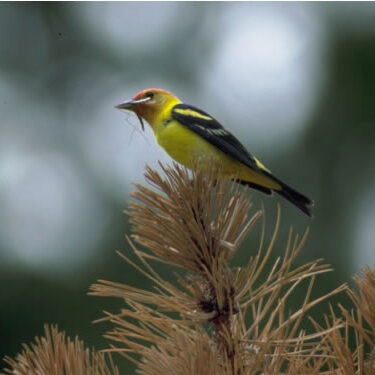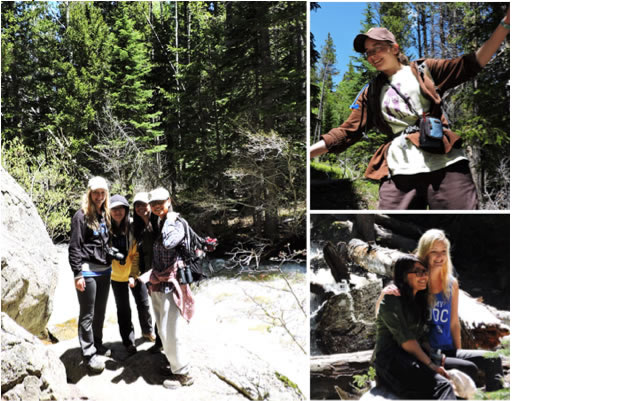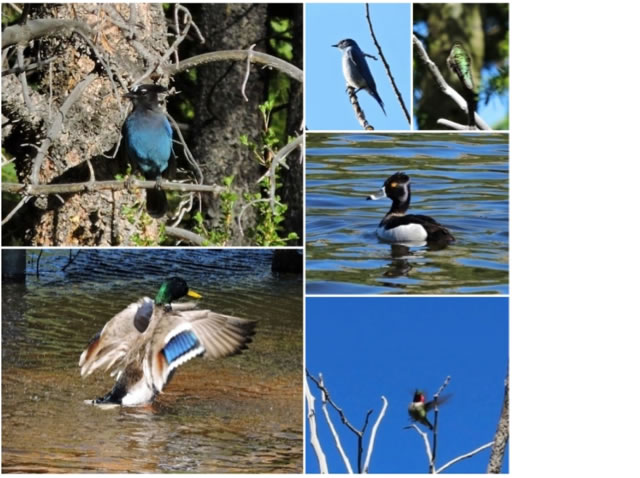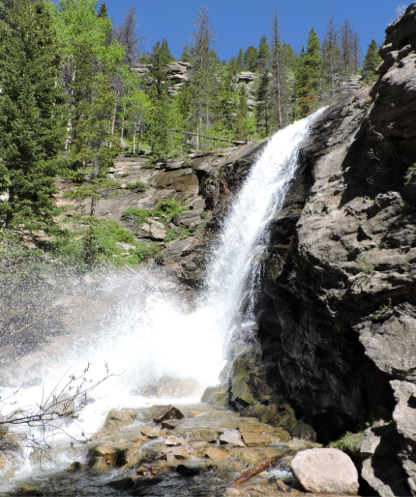We are graduate students from the Nicholas School of the Environment at Duke University working this summer as E.O. Wilson Biodiversity Foundation interns, as part of the ATBI/BioBlitz SWAT Team and Group Masters Project. Our work is supported by a partnership with Discover Life in America, Rocky Mountain National Park, and the Turner Endangered Species Fund. This summer we will be identifying gaps in the current species database at Rocky Mountain National Park. From our experiences we ultimately hope to develop a story that inspires action to preserve biodiversity in our national parks and natural spaces.
ATBI/BioBlitz SWAT Team: Week 2 in Rocky Mountain National Park
One of the goals of our project is to make biodiversity a priority for Rocky Mountain National Park’s Division of Resource Stewardship. Therefore, we have been paying close attention to learn the park’s past and present management strategies. In history, many people have contributed to the establishment and sustainability of RMNP from local naturalists to visionary leaders. It is illuminating to see how this tradition has been passed on through generations and practiced in today’s stewardship.
After a fulfilling week, the weekend was a golden time to explore the park’s many pristine beauties. We were also able to participate in some of the educational programs offered freely to the public in celebration of the 2014 International Migratory Bird Day. We attended a lecture by Jason Beason, a researcher with the Rocky Mountain Bird Observatory about their ongoing research on the Western Tanager and Osprey, in collaboration with nature reserves across continental America. All of the activities were well received by the enthusiastic audience and made us feel closely connected to the bigger picture of Rocky Mountain’s conservation.


Courtesy Rocky Mountain National Park
As the centennial of RMNP is drawing closer, the park has various innovative ways to engage the larger communities to care for nature and stimulate the dialogs among diverse mindsets and points of views. The job of Environmental Education (EE) and Interpretation is of vital importance.
Monday we joined in the training for EE/Interpretation crew led by rangers to hone our skills to communicate the relevance of nature to various audiences. Our trip started with a wild flower walk along Lily Lake. Our trainer drew our attention to the often-overlooked blooms under our feet and their accurate timetable related with insects and birds. One of the highlights of this trip was that the group leader asked us our views on humans’ role in changing RMNP. Surprisingly, the majority of the group did not believe that humans are part of the changes in the natural history. In contrast, the four of us Biodiversity Fellows unanimously believe that humans are important parts of the changes in RMNP. The diversity of the opinions and perspectives shed light on the importance of dialogs between different views and more effective education about nature. The following picture shows some of the wildflowers we spotted on our hikes.


Not only is it important to educate the public to care for nature, it is vital to let them recognize the risks while interacting with nature and so be prepared prior to the trip. As the highest peak in RMNP, 14,259-foot Longs Peak is elevated to the ultimate goal for many climbers and hikers. However, it is crucial to make informed decisions on whether or not to climb and how to prepare for it. We were fortunate to learn the changes in the park’s strategy from separating “technical” from “non-technical” climbing to educating the public by providing relevant information and advice in a case-by-case manner. Visitors are encouraged to not underestimate Longs Peak and plan and prepare by checking out relevant information on the park’s website like FAQs and Updated Conditions reports or stop by the Longs Peak trailhead information center to learn about the trip before marching on. Adventure is unavoidably accompanied by dangers and nature’s power is to be feared and obeyed.
During the summer, students from across the country offer to be volunteers for the park. Annie is one of them. As a sophomore majoring in History at Johns Hopkins University, she has been a volunteer for multiple national parks before this. We hope to have a chance to hear more about Annie’s, and other volunteers’ experiences with RMNP and other parks. Our hike to Calypso Cascades in the Wild Basin area was a relaxing and fun experience to explore nature, learn from each other, and overcome our own limits. The pictures show our hike up to the waterfall, Annie walking on a tree trunk, as well as Sahil and Casey at the waterfall.


On Tuesday we participated in the birding trip in advance of next week’s Solstice Birding Count. The trip was in the Upper Beaver Meadows at the upper limit of the montane ecosystem with a large open area and diverse bird species. Below is a collage of the birds from the montane ecosystem and Monday’s Lily Lake wetland ecosystem. After birding we participated in the seasonal training for all employees and volunteers in the park. Safety emerged as the paramount theme for all activities carried out at all times. Each department of the park’s leadership presented its major messages and updates for summer 2014. After the training, Casey and Sahil were interviewed by the filming crew from St. Vrain Middle School on their impressions of the park. The middle school is making a documentary about the “wonders” of RMNP and wanted to know what our background and wonderings were. We coordinated with Isabel Ashton on our efforts to update NPSpecies list and continued to work throughout the day. Field days are good especially when combined with the intellectual pursuit in tranquility!


In the middle of the week, we attended the training on First Aid and CPR. It took us a whole day but we are definitely more knowledgeable in both areas; thumbs up! Since safety is the primary concern in the park, we were glad to be educated and able to help in serious situations. On Thursday we attended a Division of Resource Stewardship’s Roundtable with the goal of developing employee skillsets. The training goes on the whole summer, consisting of 8 sessions, with topics ranging from federal job resume writing to finding the inner strength as an individual.
Friday was a research day for us. But this did not prevent us from enjoying a short hike and bright weather in the morning. The 3.05 mile trail from the Cow Creek Trailhead to Bridal Veil Falls was refreshing and exciting because of the many stories about the place and people told by Bill Peterson, a volunteer based in McGraw Ranch, and the mutual encouragement in difficult stretches along the road. We had to cross the bridge affected by the flood, climb a steep and flat rock to reach the other end of the trail, and remind each other not to feed the yearning chipmunks. Below is the image of Bridal Veil Falls, with its spring water roaring and chilling.
—Sahil Chaini, Zhenzhen Chen, Casey Johnson, and Jianyu Wu



